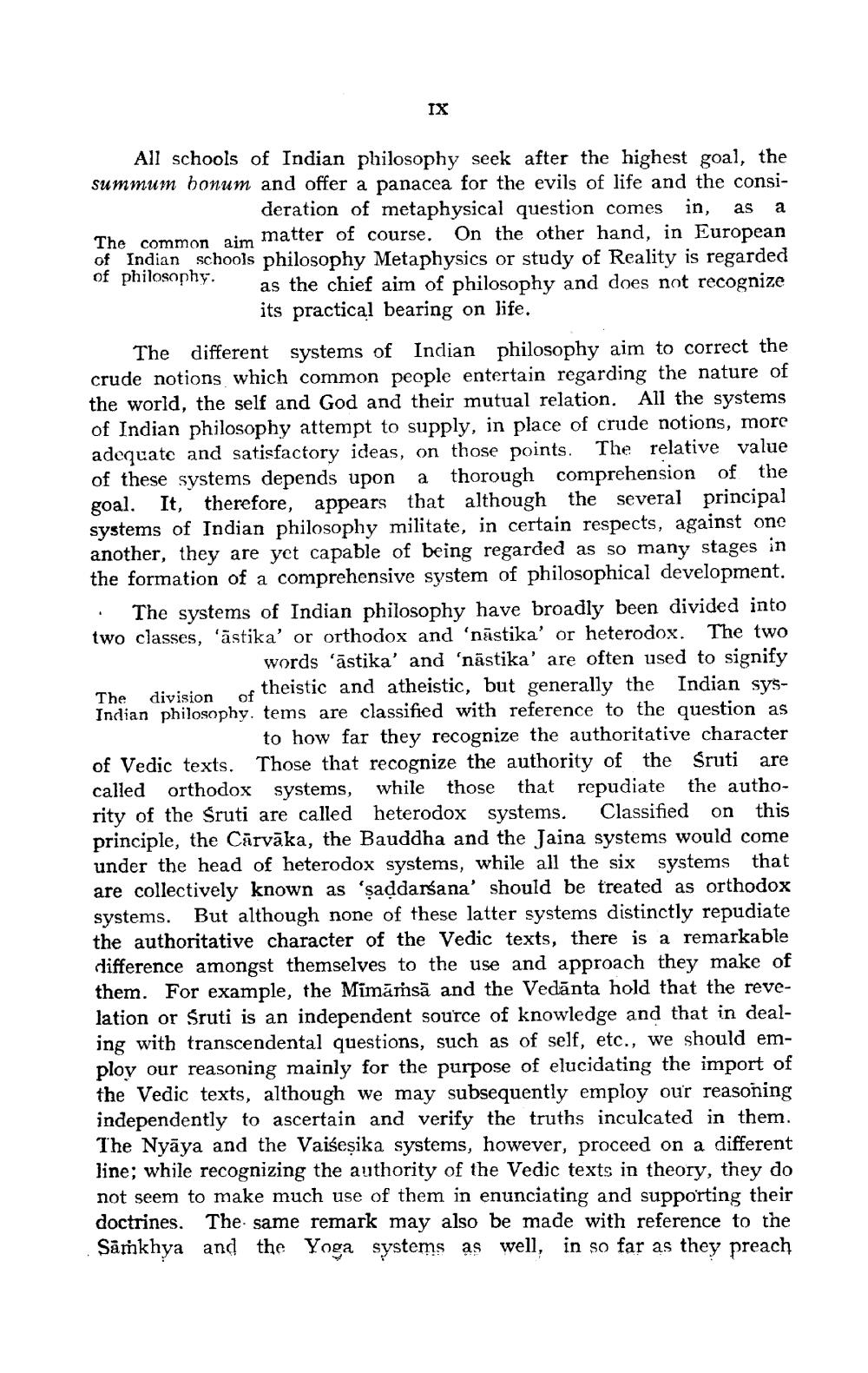________________
All schools of Indian philosophy seek after the highest goal, the summum bonum and offer a panacea for the evils of life and the consideration of metaphysical question comes in, as a On the other hand, in European The common aim matter of course. of Indian schools philosophy Metaphysics or study of Reality is regarded of philosophy. as the chief aim of philosophy and does not recognize its practical bearing on life.
IX
The different systems of Indian philosophy aim to correct the crude notions which common people entertain regarding the nature of the world, the self and God and their mutual relation. All the systems of Indian philosophy attempt to supply, in place of crude notions, more adequate and satisfactory ideas, on those points. The relative value of these systems depends upon a thorough comprehension of the goal. It, therefore, appears that although the several principal systems of Indian philosophy militate, in certain respects, against one another, they are yet capable of being regarded as so many stages in the formation of a comprehensive system of philosophical development.
4
The systems of Indian philosophy have broadly been divided into two classes, 'ästika' or orthodox and 'nastika' or heterodox.
The two
words 'astika' and 'nastika' are often used to signify theistic and atheistic, but generally the Indian sysThe division Indian philosophy. tems are classified with reference to the question as to how far they recognize the authoritative character of Vedic texts. Those that recognize the authority of the Śruti are called orthodox systems, while those that repudiate the authority of the Sruti are called heterodox systems. Classified on this principle, the Carvāka, the Bauddha and the Jaina systems would come under the head of heterodox systems, while all the six systems that are collectively known as 'saḍdarśana' should be treated as orthodox systems. But although none of these latter systems distinctly repudiate the authoritative character of the Vedic texts, there is a remarkable difference amongst themselves to the use and approach they make of them. For example, the Mimämsä and the Vedanta hold that the revelation or Śruti is an independent source of knowledge and that in dealing with transcendental questions, such as of self, etc., we should employ our reasoning mainly for the purpose of elucidating the import of the Vedic texts, although we may subsequently employ our reasoning independently to ascertain and verify the truths inculcated in them. The Nyaya and the Vaiseṣika systems, however, proceed on a different line; while recognizing the authority of the Vedic texts in theory, they do not seem to make much use of them in enunciating and supporting their doctrines. The same remark may also be made with reference to the Samkhya and the Yoga systems as well, in so far as they preach
of




